Coal tits and chickadees are two small birds of the Paridae family with similar black and white plumage, complete with a charming cap and bib.
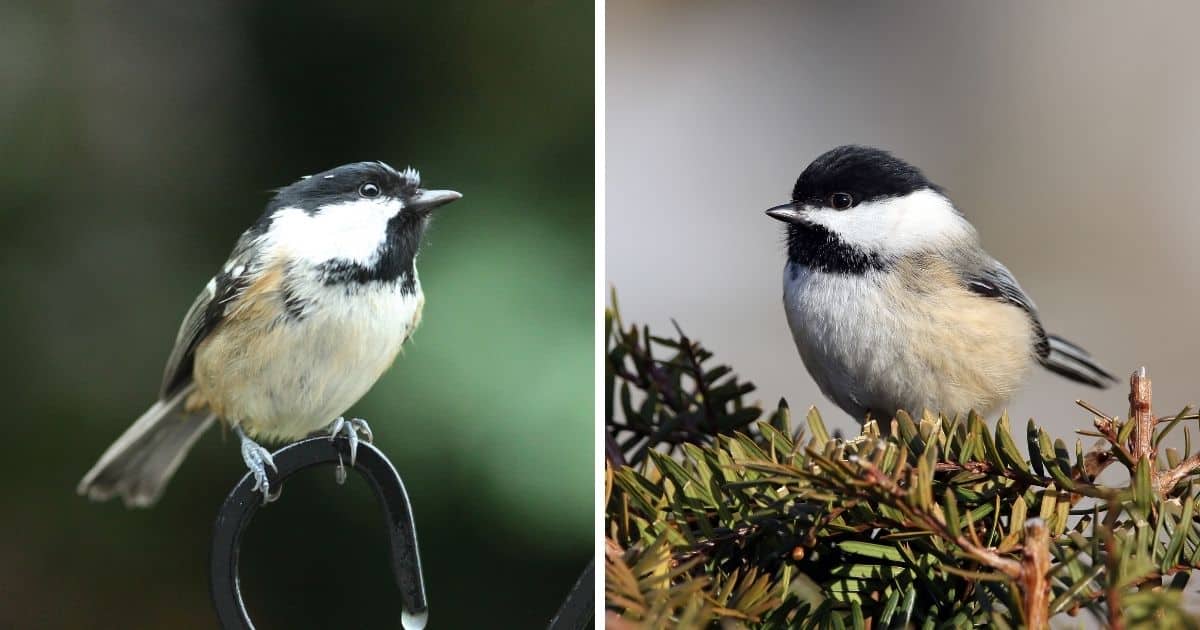
Despite their relative similarity in appearance, though, they differ in most other areas, including their habitat, range, life cycle, and willingness to interact with other species.
Read on to learn 11 key differences between the coal tit vs. chickadee.
Contents
1. Genus and Scientific Name
The coal tit and chickadee are in the same family of birds– Paridae– but they deviated at the genus level.
Coal tits are from the genus Periparus, which they share with only two other birds– the rufous-naped tit and the rufous-vented tit. Their scientific name is Periparus ater.
On the other hand, Chickadees are from the genus Poecile with the scientific name Poecile atricapillus. Poecile includes other species of chickadees, such as the Carolina chickadee and the mountain chickadee, as well as some species of tit, including the marsh tit and willow tit.
2. Plumage
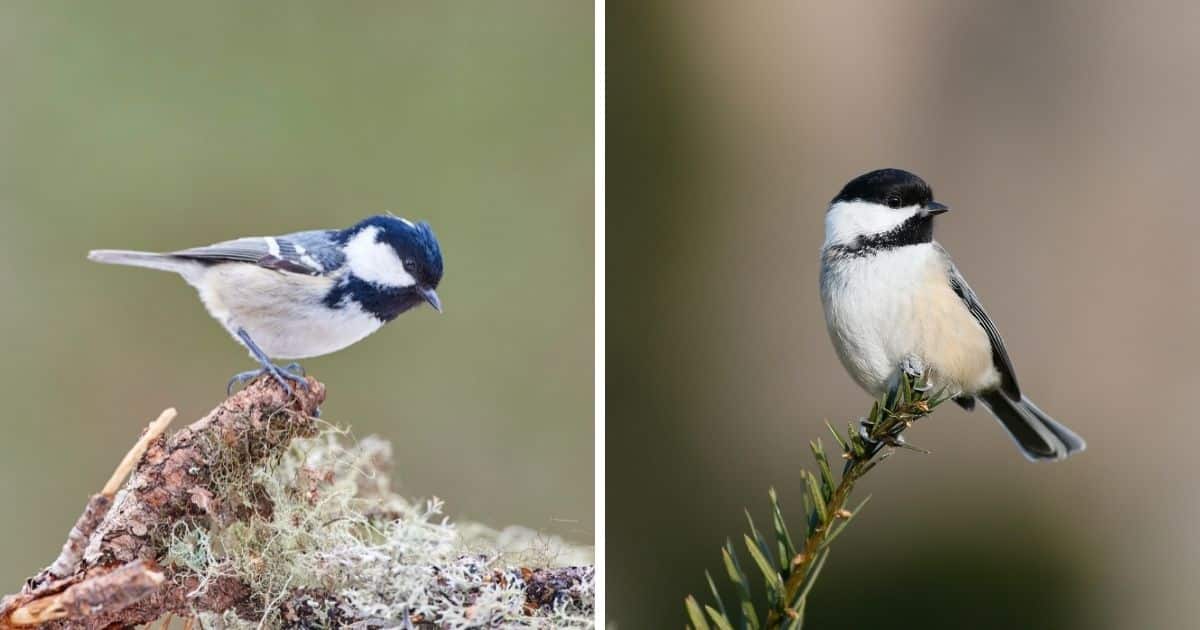
These two birds look very similar at first glance because of their black cap and bib, white cheeks, olive-colored upper plumage, and buff-colored bellies with creamy white patches.
Coal tits have longer beaks and a tawnier belly with fewer creamy areas. Their cheeks often sport a buff patch where the black cap and bib meet behind their heads, with a vertical white stripe up the nape. The white bars on their wings are also more defined.
Unlike the coal tit, chickadees’ bibs end under their chin and do not meet the cap plumage, which makes their cheek area look much more prominent. They lack the bars on their wings but have distinctive white striations. Their beaks are smaller and more “snubbed.”
3. Size, Weight, and Wingspan
Coal tits can grow slightly more prominent than chickadees, weighing between 7 and 12 grams with a length of 10 to 12 centimeters and a wingspan of 12 to 17 centimeters.
The plump, nearly orb-shaped chickadees clock in at 12 to 15 centimeters but tend to weigh more at 9 to 14 grams. They have a significantly larger wingspan, though, at 16 to 21 centimeters.
4. Location
Birdwatchers in Europe, Asia, and northern Africa can spot the agile coal tit, as they have a vast range. While they’re not migratory birds, non-breeding individuals may fly great distances to find food.
Chickadees are endemic to North America, ranging from southern Alaska across the continent to North Carolina. They are very rarely sighted south of this land swath.
5. Habitat
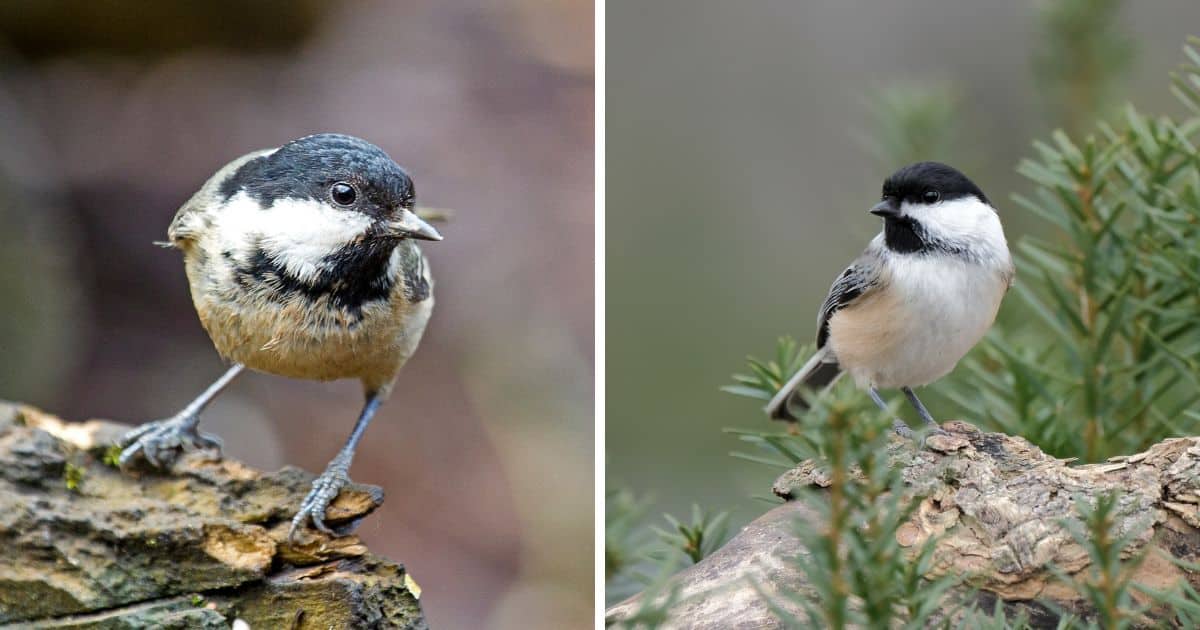
These two species are opposite in their habitat preferences, as the coal tit primarily prefers coniferous forests, gardens, and parks with abundant access to seeds.
The deciduous forests are home to chickadees, mainly birch, alder, or willow thickets. They’re less likely to settle in suburban areas unless they have open nesting sites with little competition from other birds.
6. Song
The whistles and calls of coal tits are relatively simple compared to the chickadee. They sing “see-see” when on the hunt for food but are most commonly heard calling a high-pitched “if-he-if-he.”
One of the most distinctive features of the chickadee is its song. Researchers have identified thirteen different calls, each communicating a separate piece of information to their mate or flock in their densely-covered habitats.
The most commonly heard song is their “chick-a-dee-dee-dee-dee” call, the source of their name. Males and females produce this call, and the birds rearrange the four “dee” notes– identified as A, B, C, and D–to mean different things.
Scientists have found that the C “dee” note, which is low-high-low, means they are looking for food, while the non-fluctuating D note indicates a predator in the area.
7. Diet and Feeding Habits
Both birds are omnivorous, feeding on insects, berries, and seeds, but their distinctive habitats dictate the available diet. They are accomplished foragers that create caches of food to revisit when scarcity arises.
Coal tits feast on conifer seeds, such as spruce, fir, alders, and birches. It will eagerly frequent garden feeders when sunflower seeds are available, though it prefers to poach one seed at a time before flying away to crack it open. They may eat spiders and insects in the warmer months.
Caterpillars are a favorite of the chickadees, particularly in the summer months, along with snails, spiders, and other small insects. In the winter, their metabolism slows as they switch to seeds and berries. Chickadees will sometimes eat animal fat to increase their body mass.
8. Nesting
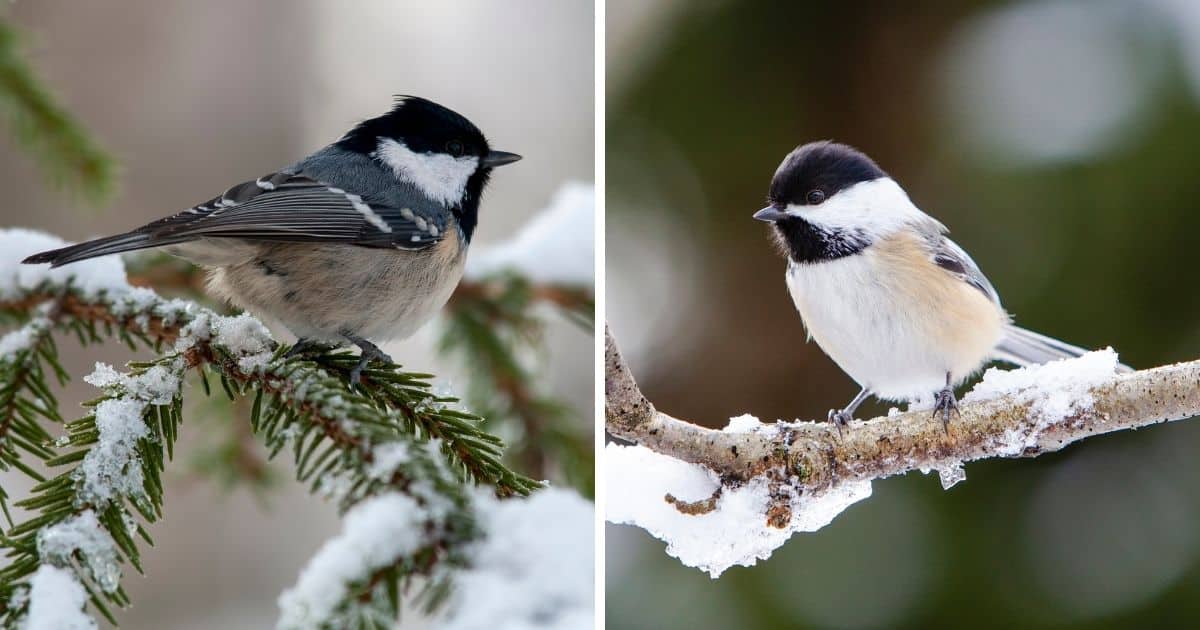
Coal tits build their nests low to the ground in stumps, tree holes, and even in abandoned burrows. They do not dig their nesting sites but are meticulous in lining the area in woven-together beds of grass or moss. Once the main structure is complete, the mother uses soft fur and feathers for the lining.
Chickadees nest April through June, building their nests anywhere from 1.5 to 20 meters high, particularly in natural tree holes, old woodpecker cavities, and rotten branches. If a pre-made nesting site isn’t available, these industrious little birds will create their own.
Once the cavity is large enough, the female lines it with moss and strips of bark, followed by a soft layer of animal fur.
9. Laying and Parenting
Both birds form monogamous pairs, mating for life. However, their approach to raising the nestlings differs.
In coal tits, mothers take on a more extensive parenting role, with fathers contributing to some extent once the eggs have hatched. The female birds lay in May, with clutches of 7-11 white eggs with scarlet speckling. They incubate for 14-16 days, followed by a nesting phase of 14-16 days. Both parents feed the nestlings.
Parenting is more egalitarian in the chickadee species, who work together to raise clutches of 6-8 white eggs with ruddy freckling. Mothers sit on the eggs for up to two weeks, during which the father feeds his mate.
After hatching, both parents leave the nest and are responsible for feeding the hatchlings for 12-16 days, at which point they fledge to begin life on their own.
10. Lifespan
The Eurasian coal tit is similar to the rest of the Periparus genus, living a relatively short span of two years on average.
The charming chickadee lives around six years, though there have been many instances of tagged birds surpassing the average.
11. Interactions with Humans
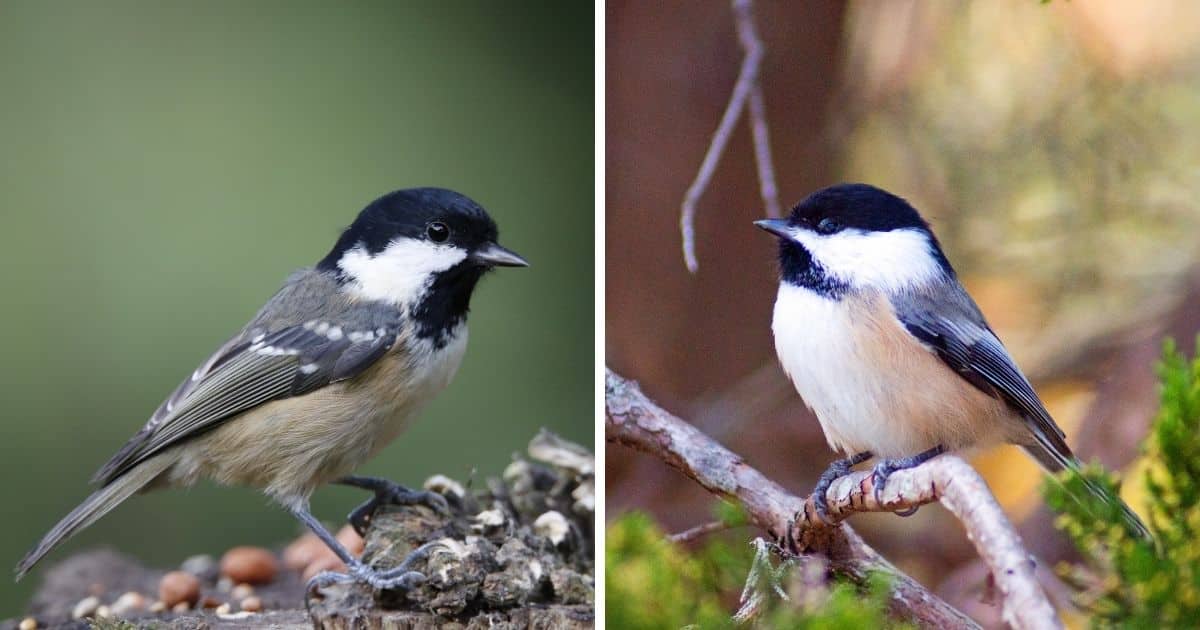
Coal tits are relatively territorial birds, despite their small size. While they’ll eagerly join up with their species’ flocks outside the breeding season, they prefer to avoid humans and will pass over backyard garden feeders with too much activity.
Chickadees have no qualms about people and are well-known for their friendliness, going so far as to land on hikers or forest explorers to say hello. These birds are highly social and lose the fear of novel situations with repeated exposure, which means they are no longer fearful of humans once they’ve had a few positive interactions.
Some scientists believe this trait stems from our shared ability to detect arousal in voices or vocalizations. Studies have shown that chickadees can understand our intentions by our tone of voice. If we sound friendly and non-predatorial, they’ll hop right up, even hand-feeding from a familiar face.
Wrapping Up
Despite being closely related–as evidenced by their appearance and aptness at caching foods–the similarities of the coal tit vs. chickadee are few.
The coal tit lives the simple life of a songbird, avoiding humans and nesting in sites made by their larger winged counterparts.
Chickadees, however, have quickly risen to the top of the list of favorite birds in North America, given their complex songs, high intelligence, and enjoyable social interactions with humans.
